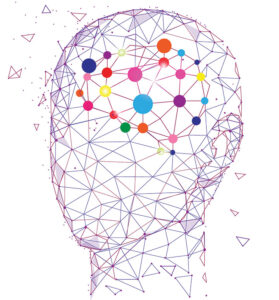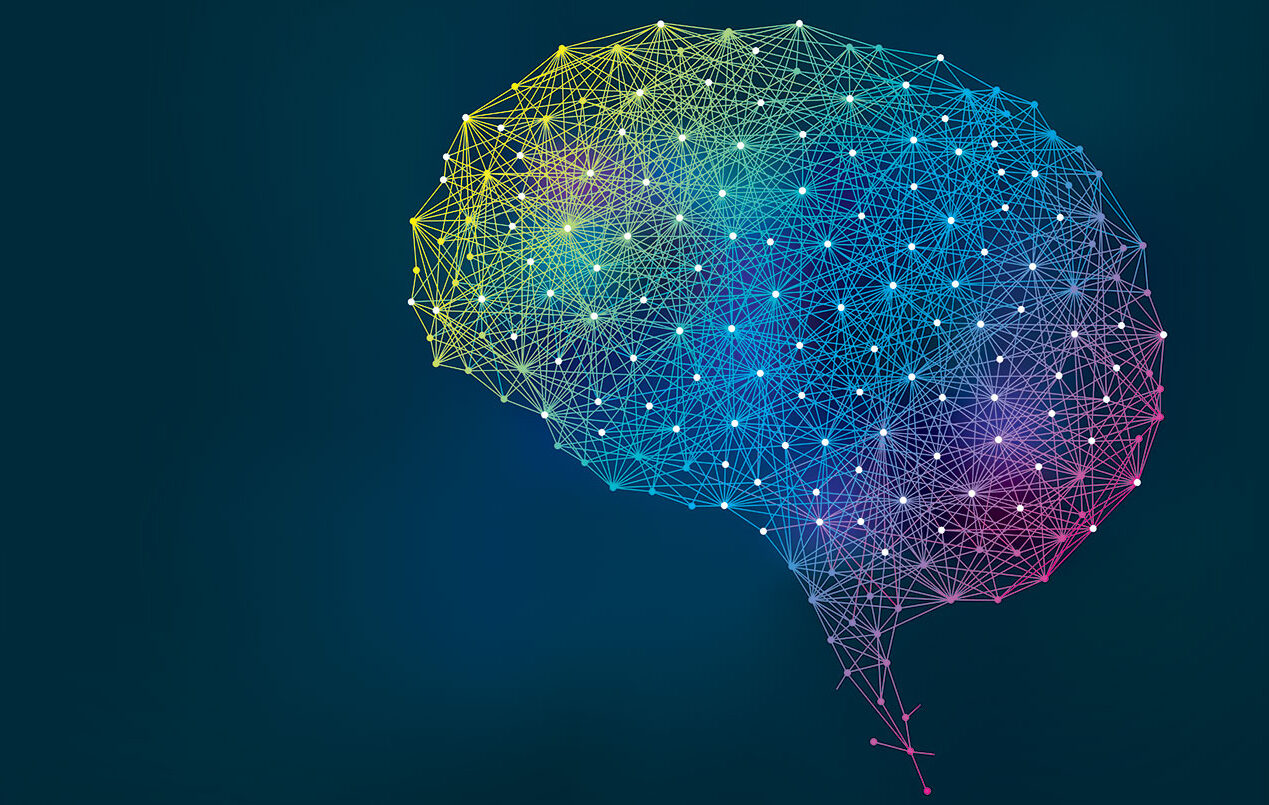The adult human brain is made up of billions of neurons and glial cells. Understanding the diversity of these cells and their distinctive gene-regulatory mechanisms is crucial for determining how the brain works and, in turn, for developing treatments for neurologic disorders.
Until recently, cell populations were defined based on physiology, morphology, and individual protein biomarkers that could be detected by techniques such as immunohistochemistry and immunofluorescence.

senior investigator
Allen Institute for Brain Science
“There’s an enormous history and literature on trying to understand the cellular makeup of the brain, that has been fundamentally driven by the technologies that have been available,” said Ed Lein, PhD, senior investigator at the Allen Institute for Brain Science.
These methods did not really allow researchers to determine how many types of cells there are, how different they are, or how their functions within the brain are distributed.
In the last decade, the introduction of high-throughput single-cell technologies that measure genomics, transcriptomics, and epigenomics has revolutionized our understanding of neuronal diversity.
“As these technologies have evolved, they have really allowed us to get to the fundamental unit of the cell, and start to deeply understand cellular diversity, which then enables one to understand how functional circuitry may be built up of those types of cells,” said Lein. Along with many others, he believes “the real game changing technology for this was single-cell genomics.”
“Finally, we could get to the to the atomic level of a cell, and extensively measure all the genes that are being used. Applied in a highly scaled up way, we can now tackle very complex nervous system tissues, and begin to quantitatively understand the nature of cellular diversity, where cells are defined by signature gene expression pattern.”
At present, the most mature single-cell investigation technique is single-cell RNA sequencing (scRNA-seq). The technology enables thousands of transcripts to be simultaneously measured in thousands of cells and has led to multiple discoveries over a short time, like the identification of novel cell types and subtypes and insights into the evolution of the human brain.
Further developments have allowed researchers to delve deeper into the inner workings of the cell and combine genomic and transcriptomic data with epigenetic information that profiles open chromatin regions and DNA methylation. “These multimodal datasets have allowed us to better study how gene regulation occurs in individual cells and define the peculiarities that distinguish cell types and states at the molecular level,” wrote Sandra M. Fernández-Moya, PhD, a postdoctoral researcher at the Bellvitge Biomedical Research Institute in Barcelona, and co-authors in a recent Transcriptomics review on neural cell diversity in the light of single-cell transcriptomics.
Despite the ongoing success of scRNA-seq, an important practical obstacle exists: the need to dissociate viable cells from whole tissue without inducing stress, cell death, and/or cell aggregation. This is particularly challenging in the case of the human brain due to limited tissue access. Therefore, in most cases, human brain cells are characterized using single nuclei RNA-seq (snRNA-seq) as nuclei are easily obtained from the cells regardless of their condition. It also means frozen and fixed postmortem cells can be used, which is currently not the case with scRNA-seq.
Newer spatial transcriptomic methods provide an additional layer of structural information on the relationships between spatial organization and function. These methods have contributed to a paradigm shift in brain cell taxonomy, but the results still align with traditional morphologic and physiologic taxonomies.
Mapping the cells within the brain
One of the biggest projects currently employing single-cell omics techniques is the U.S. National Institute of Health’s (NIH) Brain Research through Advancing Innovative Neurotechnologies® Initiative, or the BRAIN Initiative, which launched in 2014 with the goals of developing new tools to transform our understanding of the human brain and creating a comprehensive reference of the diverse cell types in human, mouse, and non-human primate brains.
The project has had huge investments from the NIH, with the total expected to reach $5 billion by the end of 2026. The first of three transformative projects outlined by the BRAIN Initiative was the 2014 BRAIN Initiative Cell Census Consortium, a pilot project to identify and validate scalable technologies for characterizing and classifying brain cell types. This was quickly scaled up in 2017 into the BRAIN Initiative Cell Census Network (BICCN). BICCN was tasked with generating a complete atlas of cell types in the mouse brain and creating comprehensive draft cell atlases of human and non-human primate brains.
In October 2023, BICCN collaborators published their findings in a package of 21 papers across Science, Science Advances, and Science Translational Medicine, in which they characterized more than 3,000 human brain cell types.
At the core of the publications was the first draft of a human brain cell atlas based on three studies using snRNA-seq and measurements of DNA methylation and chromatin accessibility (Kimberly Siletti et al., Yang Li et al., and Wei Tian et al.). Together, these studies showed how the types of neurons and the degree of neuronal diversity vary widely across brain regions.
Lein, who worked on the BICCN project, said that one of the most striking findings so far is “just the sheer complexity” of the cells within the brain. He added that “most of the attention for studying diversity in the brain goes to the neurons, but there’s plenty of non-neuronal diversity as well and so now we’re really starting to appreciate that.”
Other studies looked at how brain cells vary across individuals and between humans and non-human primates. For example, research led by Allen Institute scientist Nelson Johansen, PhD, showed wide variation in brain-cell types across 75 adult humans undergoing epilepsy and tumor surgeries, but found that less than half of the differences could be explained by demographic indicators such as sex or ancestry.
In addition, Nikolas Jorstad, PhD, who also worked at the Allen Institute, and colleagues showed that chimpanzee neurons are more like gorilla neurons than human neurons, even though chimpanzees and humans share a more recent common ancestor.
“Only a few hundred genes showed human-specific expression patterns, and these were disproportionately near genomic regions with signs of evolutionary selection in humans,” noted Alyssa Weninger, an undergraduate researcher at the University of North Carolina Chapel Hill, and Paola Arlotta, PhD, a professor of stem cell and regenerative biology at Harvard University, in a Science commentary on the 21 studies. “These results suggest that the specific properties of the adult human cortex may derive from relatively few cellular and molecular changes.”
They add that the genetic differences between the brains of human and non-human primates “highlight the need to complement the use of animal model systems with human model systems,” like human brain organoids that are grown in the lab from stem cells.
“Understanding how to build organoids, and whether they replicate features and properties of the native tissue, requires comprehensive datasets of the human brain not only in the adult but also across development,” wrote Weninger and Arlotta.

In December 2023, BICCN members published more impressive work: the first complete cell census and atlas of a mammalian brain. Compiled in 10 articles published in Nature, the studies show how the researchers used cutting-edge single-cell transcriptomics, epigenomics, and spatial genomics technologies to define and localize neuronal and non-neuronal cell types within the mouse brain. They characterized more than 32 million cells and uncovered more than 5000 different cell types.
The data from the mouse brain cell atlas provides a starting point for generating similarly comprehensive cell-type atlases for other species and across developmental phases that will allow researchers to compare the conservation and divergence of cell types between humans and model organisms.
BICCN was succeeded by the BRAIN Initiative Cell Atlas Network (BICAN) in 2022. The five-year project is expected to generate a complete atlas of cell types in the human brain, which, at approximately three orders of magnitude larger than the mouse brain, is an ambitious project.
BICAN has so far funded 11 projects, including a Center for Multiomic Human Brain Cell Atlas led by Joseph Ecker, PhD, at the Salk Institute, the Human and Mammalian Brain Atlas consortium led by Ed Lein and Hongkui Zeng, PhD, at the Allen Institute, and an Atlas of Human Brain Cell Variation under the guidance of Steve McCarroll, PhD, and Evan Macosko, MD, PhD, at the Broad Institute.

assistant professor
Human Genetics, University of California Los Angeles
Another BICAN collaborator is Chongyuan Luo, PhD, whose lab at UCLA is using three-dimensional chromosomal architectural information to classify developmental cell types and identify key regulatory dynamics that may underlie cellular maturation.
Luo and team have developed two innovative multiomics assays that they will use for the project: snm3C-seq for single-nucleus joint profiling of DNA methylation and chromatin conformation, and snmCT-seq for single-cell joint profiling of the transcriptome and DNA methylation.
Luo said that it is important to look at single-cell DNA methylation and chromatin conformation in addition to transcriptomics because the methods “provide insights into the space that bridges the genetic information and the outcome of transcription which is characterized by the gene expression profile.”
He added that this “will aid the identification of developing brain cell types involved in neuropsychiatric disorders and regulatory regions susceptible to perturbation by disease-associated variants.”Researchers are already using data from the mouse and draft human brain atlases to study disease. For example, the Allen Institute runs the Seattle Alzheimer’s Disease Brain Cell Atlas, which maps cells from the brains of people with Alzheimer’s disease against those from the BRAIN Initiative’s reference atlas. One novel finding emerging from this work is that certain types of inhibitory neurons are lost very early on in disease progression. It was previously thought that the initial trigger for cognitive decline was the loss of excitatory cells that project from one part of the brain to another.

“We are now getting a clearer picture of the sequence of events that occurs with Alzheimer’s progression, from the perspective of particular types of cells that are selectively vulnerable to disease pathology,” said Lein. “It’s not all types of cells that are lost, but rather cells localized in certain layers of the cortex that are lost in a particular order.” One of the most powerful aspects of the single-cell technologies, according to Lein, is their ability to give a better description of disease and really understand where researchers should be shining the spotlight. “With this information we can now begin to think of Alzheimer’s more as a circuit disorder where particular circuit components are affected.”
Precision molecular access to neural circuits
The second transformative project under the BRAIN Initiative umbrella is the Armamentarium for Precision Brain Cell Access. The project, which began in 2021, supports researchers in developing a comprehensive set of tools for delivering molecular payloads to specific brain cell types in experimental animals. This includes the delivery of fluorescent reporter proteins in adeno-associated viral vectors (AAVs) to precisely map or monitor the activity of a target neural circuit with individual cell resolution. Other payloads, such as light-gated ion channels, can also be delivered to manipulate the function of specific circuit components and see how they affect the behavior of the experimental animal or circuit, explained Douglas Kim, PhD, a program officer at the U.S. National Institute of Mental Health.
Kim said that some of these tools, which are being designed with democratized broad access as a fundamental feature, are already being implemented by eight teams during the Armamentarium’s first phase. A group at the California Institute of Technology is developing AAVs that can cross the blood brain barrier and thus, be delivered intravenously in a much less invasive way than directly into the mouse or primate brain. Widespread AAV delivery to the brain can then be coupled with gene regulatory sequences in the vector for cell type-specific payload expression. Another group at Harvard Medical School is developing viral vectors that can deliver genetic constructs to stem cell-derived cortical organoids with human brain-like characteristics.
A third team at the Allen Institute is trying to advance new treatment strategies in mouse models of the seizure disorder Dravet syndrome. They showed that non-specifically delivering a normal copy of a sodium channel gene to replace the faulty one in many types of neurons did not improve outcomes, whereas selective delivery to interneurons using class-specific enhancers conferred a strong dose-dependent protection against postnatal mortality and seizures.
Kim believes that scRNA-seq and single-cell epigenomic or methylation-based sequencing methods have been “critical to the Armamentarium effort as they have identified gene regulatory sequences that are likely to be good candidates to turn on expression of the payload in the cell type target of interest.”
Creating brain-wide diagrams
The third of the BRAIN Initiative’s transformative projects is the BRAIN Initiative Connectivity Across Scales (BRAIN CONNECTS) program, which launched in September 2023. “The goal of CONNECTS is to develop technology and research capacity for high-resolution brain connectivity mapping, that can be then scaled to whole brains,” explained Kari Johnson, PhD, a program director at the U.S. National Institute of Neurological Disorders and Stroke.
She added: “Generating large-scale connectivity maps that include many different brain regions and cell types will also allow discovery of fundamental principles and motifs of neural circuit construction. Ultimately, we need this information to improve our understanding of human brain function in health and disease, which in turn could facilitate development of a new generation of therapeutics.”
So far, 11 teams developing complementary approaches to image and analyze brain connectivity at different scales have received funding. Some will map connectivity at the level of individual cells and synapses while others will focus on mapping projections between brain regions. Many of the projects will use electron microscopy, but single-cell and spatial transcriptomics techniques also play a part. One idea is to use RNA barcodes unique to individual cells that track the projections of individual neurons across long distances. This method allows large numbers of neurons to be labelled in a single brain, which will “dramatically increase the throughput of single neuron projection mapping, compared to traditional techniques,” remarked Johnson.
She noted: “In the longer term, we want to be able to get cost effective and high-resolution connectivity information from many brains. That way, we can understand how connectivity varies between specific cell types and changes under different conditions such as across development, or how connectivity of specific cell types is altered in neurological and psychiatric disorders.”
Like the Armamentarium, an important principal of BRAIN CONNECTS is to share the data and technology being developed with the broader neuroscience community so that researchers can answer specific questions in their own areas of interest.
Outside of the BRAIN Initiative, countless researchers are using single-cell omics to illuminate cellular diversity within the brain and show how this can be used to further our knowledge of the pathology of neurologic diseases and neuropsychological and neurodevelopmental disorders.
There are other atlases in development, like the Human Brain Project, the Human Cell Atlas, the International Brain Initiative, and the European Brain Research Agenda. In addition, research groups are using scRNA-seq to track how brain cells age, determine what happens during traumatic brain injury, identify the differences in how brain cells from men and women respond to stress, and investigate whether adult human brain cells can regenerate, to name a few areas of study.
Despite the incredible progress that has been made in the past decade, there is much to be done before the groundbreaking knowledge on neural cell diversity can be translated to information that clearly benefits the lives of people with neurological disorders.
Indeed, the first draft of the human brain cell atlas was based on information from just three neurotypical brains. Thus, more brains from diverse origins need to be mapped. This means that greater efforts are needed to encourage brain donation so that researchers have access to the cells. Improvements can also be made in the cell preparation techniques to make it easier to sequence whole brain cells and not just the nuclei. There is still a considerable amount of work needed to determine how brains change as we grow, particularly as many psychiatric conditions have a neurodevelopmental base.
Lein said that the development of brain atlases is “just the beginning of a journey, much like the first builds of the human genome. People will now start thinking about brain function and brain diseases through the lens of cell types and the genes that define the cells.”
Read more:
1. Piwecka M, Rajewsky N, Rybak-Wolf A. Single-cell and spatial transcriptomics: deciphering brain complexity in health and disease. Nat Rev Neurol 2023; 19:346–362. doi: 10.1038/s41582-023-00809-y
2. Fernández-Moya SM, Ganesh AJ, Plass M. Neural cell diversity in the light of single-cell transcriptomics. Transcription 2023; 14: 158–176. doi: 10.1080/21541264.2023.2295044
3. The Brain Research Through Advancing Innovative Neurotechnologies® (BRAIN) Initiative
4. Ngai J. BRAIN 2.0: Transforming neuroscience. Cell 2022; 185: 4–8.
5. www.science.org/collections/brain-cell-census
6. BICCN: The first complete cell census and atlas of a mammalian brain.
7. BRAIN Initiative Cell Atlas Network (BICAN)
8. Seattle Alzheimer’s Disease Brain Cell Atlas
9. Armamentarium for Precision Brain Cell Access
10. BRAIN Initiative Connectivity Across Scales (BRAIN CONNECTS)
11. Mich JK, Ryu J, Wei AD, et al. AAV-mediated interneuron-specific gene replacement for Dravet syndrome. bioRxiv [Preprint]. 15 Dec 2023. doi: 10.1101/2023.12.15.571820.
Laura Cowen is a freelance medical journalist who has been covering healthcare news for over 10 years. Her main specialties are oncology and diabetes, but she has written about subjects ranging from cardiology to ophthalmology and is particularly interested in infectious diseases and public health.














